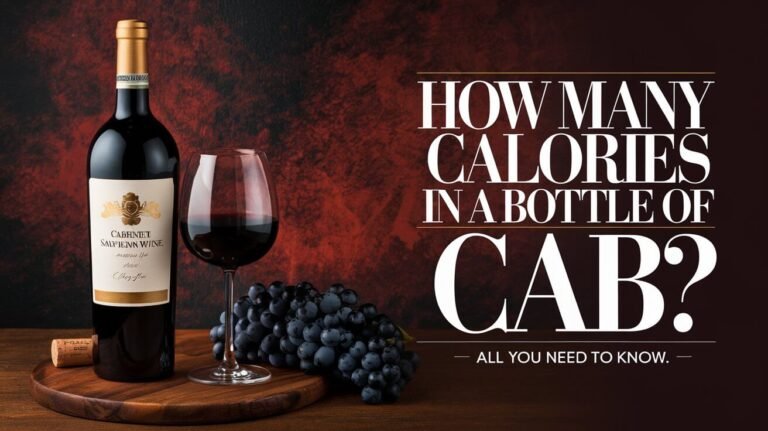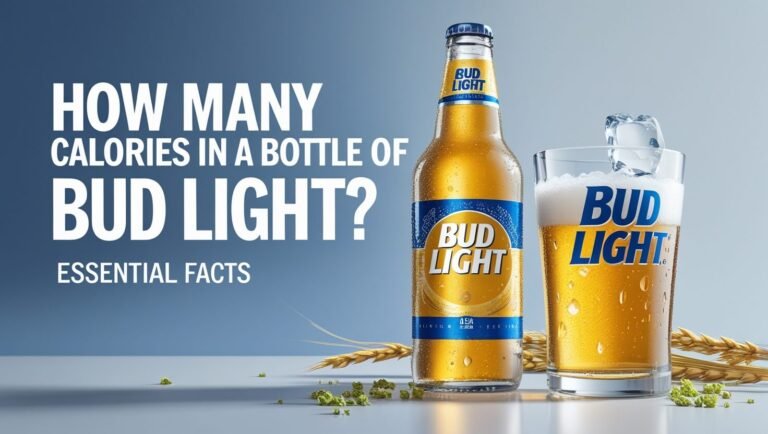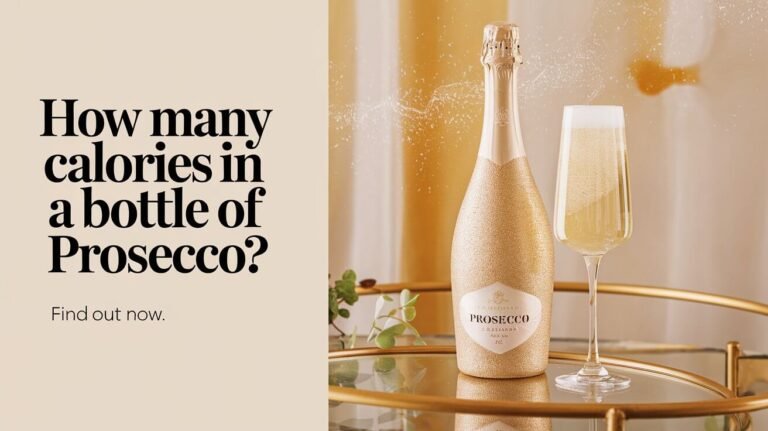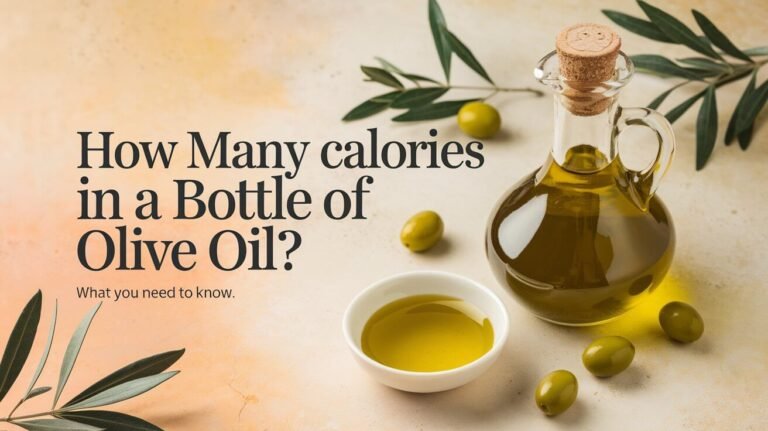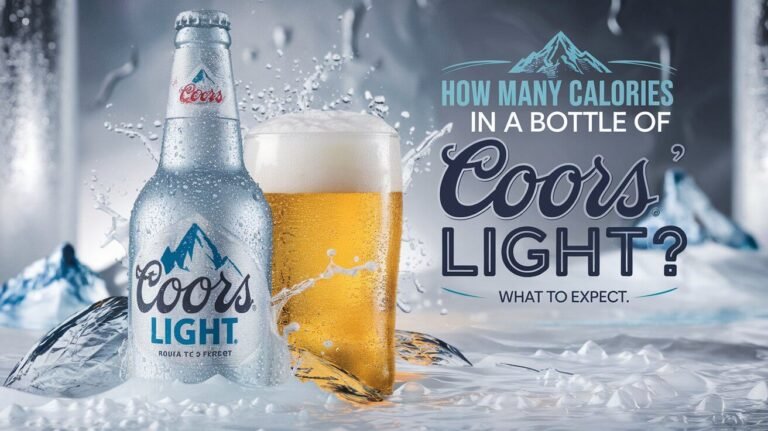How Many Calories In A Bottle Of Sake: Detailed Breakdown
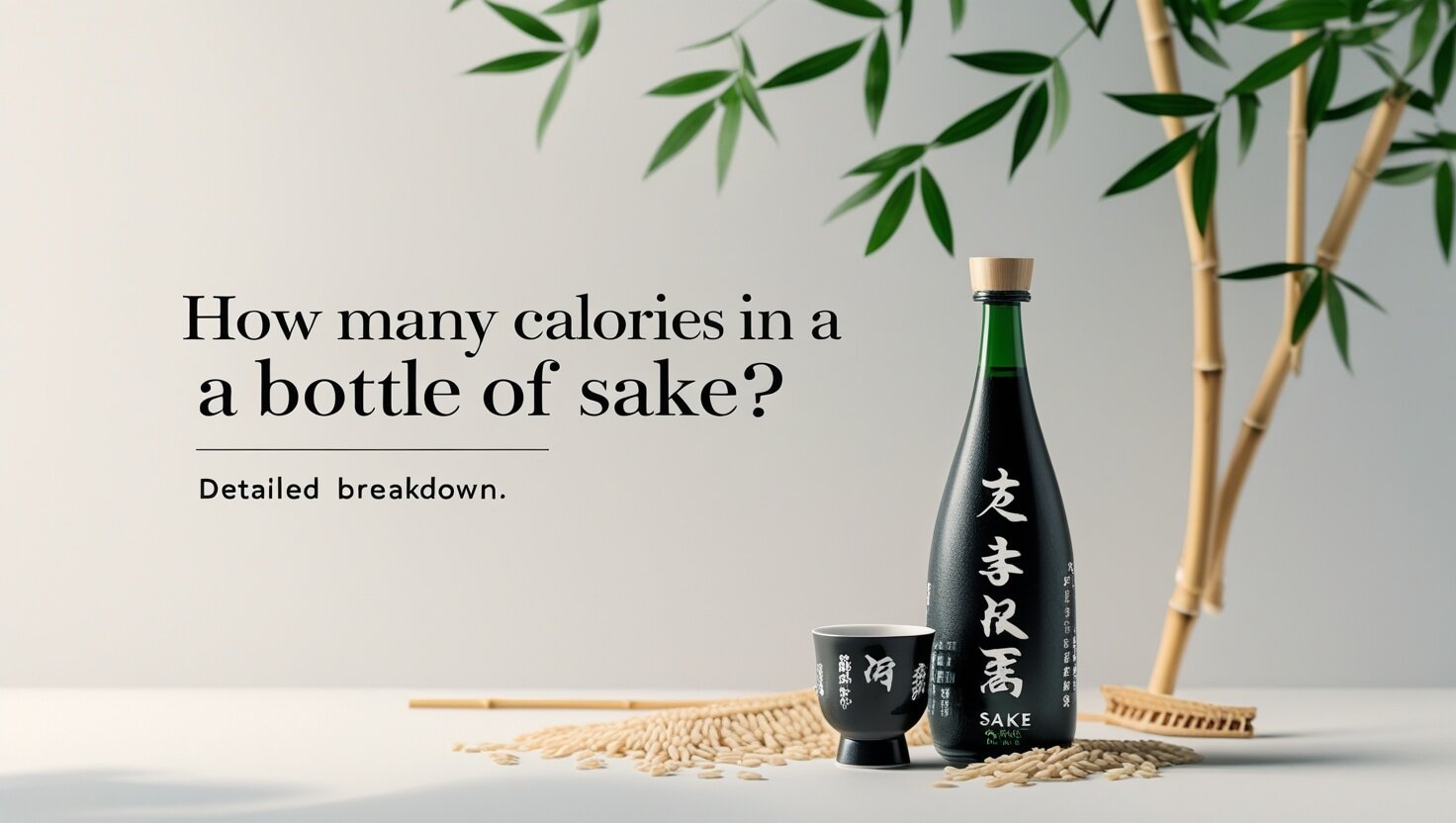
Many people wonder about the calories in a bottle of sake. It’s important to know the sake nutrition facts and calorie content. Japanese sake has about 103 kcal per 100ml. It can be part of a balanced diet if enjoyed in moderation.
To figure out the calories in a bottle of sake, consider the serving size and type. A 750-ml bottle usually has 1,000 to 1,200 calories. Each 4 fluid ounce serving has about 150 calories. Knowing this helps you make better choices about sake and your diet.
The Caloric Content of Traditional Japanese Sake
Traditional Japanese sake is loved for its unique taste and cultural importance. It’s important to know how many calories it has. The number of calories in sake can change based on its type.
The USDA says sake has 134 calories per 100 grams. Japan’s National Research Institute of Brewing and Japan Sake and Shochu Makers Association agree on about 105 calories per 100 milliliters. Gekkeikan Sake reports 108 calories per 100 milliliters of their Traditional Sake. These numbers give us a rough idea of sake’s calorie count.
Standard Serving Sizes
A standard sake serving is 1.5 ounces or 44 milliliters. It has about 50 to 70 calories. Junmai sake in a 6-ounce serving has 150 to 200 calories.
Ginjo and Daiginjo sakes have 170 to 220 calories per 6-ounce serving. Nigori sake, being cloudier and sweeter, has 200 to 250 calories per 6-ounce serving.
Alcohol Percentage Impact on Calories
Sake’s alcohol by volume (ABV) is usually between 15% and 20%. Most genshu sakes have ABV between 17% and 20%. Sake must have an ABV under 22%. The alcohol in sake adds a lot of calories, with 7 calories per gram.
Rice Polish Ratio Effects
The rice polish ratio also affects sake’s calories. Sake with a higher rice polish ratio usually has fewer calories. Knowing this helps you choose sakes wisely based on calorie count.
| Sake Type | Calories per 6-ounce serving |
|---|---|
| Junmai | 150-200 |
| Ginjo | 170-220 |
| Daiginjo | 170-220 |
| Nigori | 200-250 |
Nutritional Facts of Premium Sake Varieties
Premium sake varieties have unique nutritional facts. They have an Alcohol By Volume (ABV) of 15% to 20%. This makes them slightly higher in calories than regular sake.
A 1.5-ounce serving of premium sake has about 39-48 calories. This is lower than many other alcoholic drinks.
The main ingredients of premium sake are rice, water, yeast, and koji mold. These ingredients make its nutritional profile special. The rice used in sake fermentation affects its alcohol and calorie content.
Premium sake comes in different sweetness and flavor levels. This affects its taste and calorie density. It also has high amino acid content, seven times more than red wine. Drinking it might help lower blood sugar levels.
It’s important to know the serving size of sake. Sake is usually served in small amounts, from 1 to 4 ounces. This helps keep calorie intake in check.
The sake health benefits are also worth noting. Studies show that drinking it in moderation may reduce cancer risk and boost good cholesterol. Premium sake offers a unique mix of flavor, nutrition, and health benefits.
- Premium sake has a relatively low caloric content, with approximately 39-48 calories per 1.5-ounce serving.
- The primary ingredients of premium sake include rice, water, yeast, and koji mold.
- Premium sake varieties can vary widely in sweetness and flavor profiles, impacting their taste and caloric density.
In conclusion, premium sake has distinct nutritional facts and health benefits. Knowing its ingredients, serving size, and nutritional profile helps make better choices. It allows us to enjoy the unique qualities of this traditional Japanese drink.
How Many Calories in a Bottle of Sake: Complete Breakdown
The number of calories in a sake bottle changes with the size. Knowing the calorie count in different sizes helps those who love sake but watch their calories. Larger bottles have more calories.
A 720ml bottle of sake has about 964 calories. A 1.8L bottle has around 2,600 calories. Here’s a look at the calories in various sake sizes:
| Sake Bottle Size | Caloric Content |
|---|---|
| 720ml | 964 calories |
| 1.8L | 2,600 calories |
| Small Format (300ml) | around 400 calories |
When looking at sake calories, remember the size matters. Knowing this helps you choose the right size for your taste and calorie goals.
Carbohydrate Content in Sake
When looking at sake nutrition facts, the carbs in sake are key. A 100 milliliter serving has almost 5 grams of carbs. A standard 4-ounce serving has about 5.7 grams, which is 2.5% to 1.7% of the daily carb intake for an average American.
Sake has fewer carbs than many foods and drinks. For example, Dill Pickle Chips have 15 grams of carbs per serving. White rice has about 28.2 grams per bowl. Red wine has 2.6 grams of carbs per 100 milliliters, and vodka and whiskey have none.
The carbs in sake can change based on the sake type and brewing method. Clear sakes like junmai and ginjo have less carbs. Nigori sake, with sake lees, has more carbs. Here’s a table showing carb content in different sakes:
| Type of Sake | Carbohydrate Content (per 100ml) |
|---|---|
| Junmai | 4.5g |
| Honjozo | 4.8g |
| Ginjo | 4.2g |
| Daiginjo | 4.0g |
| Nigori | 6.0g |
Carbohydrate content in sake is key for those watching their intake. Opting for low-carb options and mindful serving sizes can make it part of a balanced diet. For more on sake nutrition, consult a healthcare expert or dietitian.
Comparing Sake Calories to Other Alcoholic Drinks
When we talk about sake calories, it’s good to look at all alcoholic drinks. A standard drink is 14.0 grams (0.6 ounces) of pure alcohol. Different drinks have different calories in each standard serving. For example, white wines have 120-175 calories, while sake has about 103 kcal per 100 ml.
When comparing sake to wine, sake might have more calories than some wines but less than others. Chardonnay has about 120-125 calories per serving, similar to sake. But, sparkling wines like Prosecco have 80-95 calories, which is less. Beer, on the other hand, usually has fewer calories, around 39.9 kcal per 100 ml. But, this can change based on the beer type.
Some important points to remember when comparing sake calories to other drinks are:
- Sake: approximately 103 kcal per 100 ml
- Beer: around 39.9 kcal per 100 ml
- Wine: varies significantly, but white wines range from 120-175 calories per serving
Knowing the calories in different drinks helps us make better choices. Whether we’re looking at wine vs sake or beer vs sake, knowing the calorie differences is key. This way, we can enjoy our drinks responsibly.
Sugar Levels Across Different Sake Types
Sake’s sugar levels change based on its type and brewing method. On average, sake has about 4 grams of sugar per 100 grams. This is similar to the sugar in 100 grams of raspberries, which has 4.4 grams. The American Heart Association suggests men should not have more than 36 grams of sugar daily, and women should not have more than 25 grams.
Some sakes, like Geikkekan’s “sugar-free” sake, have less than 0.5 milligrams of sugar per 100 milliliters. On the other hand, sweeter sakes like Hakutsuru “Sayuri” have more sugar. The Sake Meter Value (SMV) shows a sake’s sweetness or dryness. For example, Asabiraki “Suijin” has an SMV of +10, while Harushika “Extra Dry” has an SMV of +12.
Sake’s nutrition facts can change based on brewing ingredients. Tokutei meishoshu (premium sake) only has rice, water, koji, and yeast. Futsushu (table sake) might have added ingredients, including sugar. Knowing about sugar levels in sake helps you choose wisely and enjoy its traditional Japanese taste.
| Sake Type | Sugar Content (g/100ml) | SMV |
|---|---|---|
| Geikkekan “sugar-free” | N/A | |
| Asabiraki “Suijin” | 1.2 | +10 |
| Harushika “Extra Dry” | 1.5 | +12 |
| Hakutsuru “Sayuri” | 3.5 | -11 |
Sugar levels in sake help you enjoy its complexity. Whether you prefer sweet or dry, facts enhance the experience.
Sake Production Methods and Caloric Impact
The way sake is made affects its calories. Old methods can make sake higher in calories. New ways can make it lower. Knowing this helps us see how nutritious sake is.
The making of sake is key to its calorie count. For example, how it ferments changes the carbs and sugars in the drink. Here are some things that change sake’s calorie count:
- Old brewing ways use more rice and take longer. This makes sake higher in calories.
- New methods use less rice and ferment faster. This makes sake lower in calories.
- The rice polish ratio also matters. A higher ratio means less calories in sake.
On average, sake has about 100 kcal per 100 ml. This is less than beer and whiskey. Here’s a table comparing calories in different drinks:
| Beverage | Calorie Content per 100 ml |
|---|---|
| Sake | 100 kcal |
| Beer | 40 kcal |
| Whiskey | 240 kcal |
Sake’s production and calorie impact help us make wise choices and enjoy this Japanese drink responsibly.
Daily Recommended Limits and Portion Control
When it comes to sake, daily recommended limits can vary. This depends on the individual and their health goals. Portion control is key to avoid drinking too much. To find the right daily recommended limits for sake, think about your health and diet.
A good rule is to stick to the sake drinking guidelines. These are set by the WHO and USDA. For women, it’s one drink a day. For men, it’s two. But remember, portion control for sake is important to not go over these limits.
Here are some tips for portion control for sake:
- Drink sake in moderation, following the sake drinking guidelines.
- Pay attention to the serving size. Sake can have a lot of calories and carbs.
- Think about the daily recommended limits for sake and adjust your drinking.
By following these tips and controlling your sake portions, you can enjoy it while staying healthy. Always drink responsibly and know the sake drinking guidelines. This way, you can have a fun and safe time.
| Drink | Calories per serving | Sugar per serving |
|---|---|---|
| Sake (1 shot) | approximately 100-120 calories | less than 1 gram |
| Red wine (5-ounce serving) | roughly 100-160 calories | less than 1 gram |
| Champagne (4-ounce serving) | around 85 calories | less than 2 grams |
Health Aspects of Sake Consumption
Sake has health benefits when consumed in moderation. It contains compounds that can lower the risk of diseases like cancer and heart disease. These compounds include antioxidants and nutrients.
It’s key to know how much sake is safe to drink. For women, it’s up to one serving a day. Men can have up to two servings. Sake has fewer calories than many drinks, with 156 calories in a 4-ounce serving.
Beneficial Compounds
Sake has many good compounds, including:
- Antioxidants, which protect cells and fight chronic diseases
- Peptides, with anti-inflammatory and anti-cancer effects
- Minerals like selenium, zinc, and calcium for health
Dietary Considerations
Knowing what to consider when drinking sake is important. This includes:
| Nutrient | Amount per serving |
|---|---|
| Calories | 156 |
| Carbohydrates | 5.8g |
| Protein | 0.6g |
| Fat | 0g |
Learning sake’s health benefits and dietary aspects helps you enjoy it wisely and benefit from its traditional Japanese goodness.
Selecting Lower-Calorie Sake Options
Sake’s calorie content can change a lot based on its type and how it’s made. For those watching their calories, picking lower-calorie sake is a smart move. Junmai sake is made from rice, water, and koji, without added alcohol or additives. This makes it a purer choice with fewer calories and sugars.
When picking a lower-calorie sake, the rice polishing ratio is key. Sake with a higher polishing ratio, like Junmai Ginjo or Junmai Daiginjo, has fewer calories and less sugar. Here are some tips for choosing lower-calorie sake:
- Opt for Junmai sake, which generally has lower calories and sugar content
- Choose sake with a higher polishing ratio, such as Junmai Ginjo or Junmai Daiginjo
- Consider the Sake Meter Value (SMV), which indicates the dryness of the sake – a higher SMV indicates a drier sake with less sugar
Understanding what affects sake’s calorie content helps you make better choices. You can pick lower-calorie sake that fits your taste and diet. Whether you’re a sake expert or new to it, there’s something for everyone.
Always check the sake nutrition facts and sake calorie content to make the best choice for you. With a bit of knowledge, you can enjoy your favorite sake while keeping an eye on calories and health.
Sake Storage and Caloric Stability
Keeping sake in the right place is key to keeping its calories stable. The best temperature for sake is between 40°F and 50°F. This keeps the sake’s taste and smell fresh.
It’s important to keep sake bottles away from sunlight and heat. Storing it in the fridge helps keep the temperature steady. This stops the sake from going bad too fast.
Temperature Effects on Sake
The temperature where sake is stored can change its calorie count. Cooler temperatures usually keep the calories steady. But warmer temperatures can make the calories go up a bit.
Aging Impact on Nutritional Content
Aging can change the nutritional value of sake. Some high-end sakes can get better with a little aging. But, it’s important to remember that aging can also make the calories change. Storing sake right is key to keeping its quality and calorie count the same.
To keep sake’s calories stable, store it in a cool, dark spot. Drink it within a year of when it was bottled. By storing sake correctly, fans can enjoy it while keeping its nutritional value.
In Closing
The calories in sake can change a lot. This depends on the type, how it’s made, and where it’s stored. But, when enjoyed in small amounts, sake can be a better choice than beer or spirits.
Sake has nutrients like amino acids and antioxidants. These might help your skin, sleep, and heart health. Knowing about sake calories and sake nutrition facts helps you choose sake wisely. It fits well with health goals.
Sake is interesting because of its many types and flavors. It’s worth learning more about.

